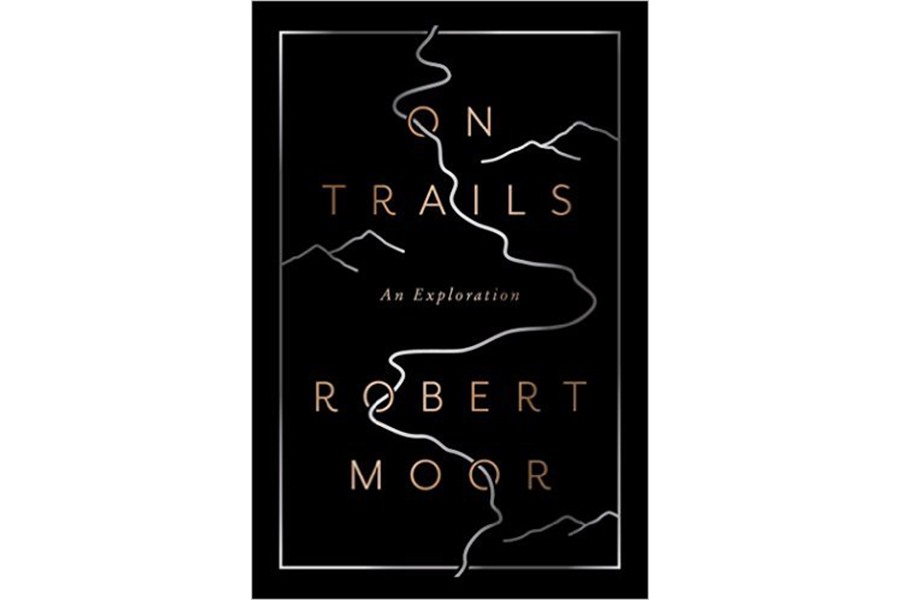'On Trails' celebrates the deep history of trails on earth
Loading...
In the Beginning, there were the Ediacarans: “brainless, jelly-quivering do-nothings.” They lived in the nasty bacterial mats and toxic sediment that carpeted the littoral waters off Mistaken Point, Canada, 565 billion years ago, in the wake of the worldwide glaciation event known as Snowball Earth. Now, Ediacarans may well have looked like “a bag of mud,” but journalist Robert Moor is being a little rough with the “do-nothing” gibe, for these creatures cut the oldest known trails on earth. And when you are writing a deep history of trails on earth, as is Moor in his good, rangy, and spry On Trails, Ediacarans are the Beginning.
Your own first steps are high up in life’s celebratory moments. What do we do with this newfound locomotion? We blaze a path to the cookie jar. We cut a trail from one point, mother’s lap, to another point, the land of cookie, whence we may move on to the watering hole (that would be the toilet bowl) or return to the point of origin, mother’s lap. That, for Moor, is the crux: trails “persist because they connect one node of desire to another: a lean-to to a freshwater spring, a house to a well, a village to a grove. Because they both express and fulfill the collective desire, they exist as long as the desire does; once the desire fades, they fade too.” Trails are lines of desire, here muddy – real, sucking glop – and there, metaphorical.
Trails are a “tactful reduction of options,” writes Moor, evolving to serve a need: spiritual, philosophical, directional, often rolled into one. Trails have authors – water, ants (“arguably the world’s greatest trail-makers”), the cow paths that became Boston’s street plan (“Well, there are worse surveyors,” wrote Ralph Waldo Emerson) – but every creature that comes behind is an editor, adding proof marks to the simple, organic, and iterative trails. Like all communal projects, trails morph with time, like work songs, old jokes, and recipes. Shortcuts are found – “geographic graffiti” – that rebuke a path’s waywardness or subvert the tyranny of a trail’s constraints. Intentions change as well. A path once skirted a mountain’s peak but now seeks out its field of view. Or, as Moor neatly puts it: “A trail sleekens to its end.”
Moor is a boots-on-the-ground empiricist of trails. No armchair explorer, he has hoofed the Appalachian Trail, just for an example, which is serious trail cred. He is a connoisseur of toe fungus, crotch rot, and twisted ankles. He walks alone and with a pleasing selection of oddfellows and fruitcakes. Gratifyingly, he has also tramped the literature, from professional, contemporary trail-makers to great walker/writers of the past. William Cronin may bemoan that by “imagining that our true home is in the wilderness we forgive ourselves the homes we actually inhabit.” Yet how often do we get a chance to touch the untamed landscape, the truly wild? You know that Moor has experienced something like a trail’s mystic transport when he tenders, without trepidation, one of Henry David Thoreau’s juiciest transcendences, experienced when he was caught in a lightning storm on the flank of Mount Katahdin: “This was the Earth of which we have heard, made out of Chaos and Old Night. Here was no man’s garden, but the unhandseled globe.... It was Matter, vast, terrific ... rocks, trees, wind on our cheeks! the solid earth! the actual world! the common sense! Contact! Contact!” Contact, and goosebumps.
Moor doesn’t moon about as he seeks the meaning – the soul – of trails. His is a serious endeavor. Occasionally his writing will become painfully dry to appropriate science in making a point, sometimes quoting others (“life is ‘a self-perpetuating chemical reaction’ or ‘a self-assembling dynamic system’ “), sometimes constructing his own frames: a trail is “a collective, externalized mnemonic system.” Both true, if spontaneously combusting. Let them go. Better to walk along with Moor as he reads trails, offering “a rich cultural creation and a source of knowledge in themselves,” an archive of botanical, zoological, geographical, ethical, genealogical, cosmological, and esoteric wisdom. There are the trail networks, some human and some nonhuman, that collapse “a complex environment down into neat, easily recognizable lines, like the color-coded lines of a subway system,” this one taking you to medicinal herbs, or a stone circle, or Piccadilly Circus.
In one beautiful episode recounted by Moor, an old Apache cowboy quietly recites to himself a long list of place names. Asked what he is doing, the man replies that he “talked names” all the time. This activity also goes by the word topogeny, the reciting of place names one after another; “storytelling at its most spare, rendering a narrative down to a string of dense linguistic packets, like seeds, which flower in the mind.” Or, as the old cowboy shaved it clean: “I like to. I ride that way in my mind.”








